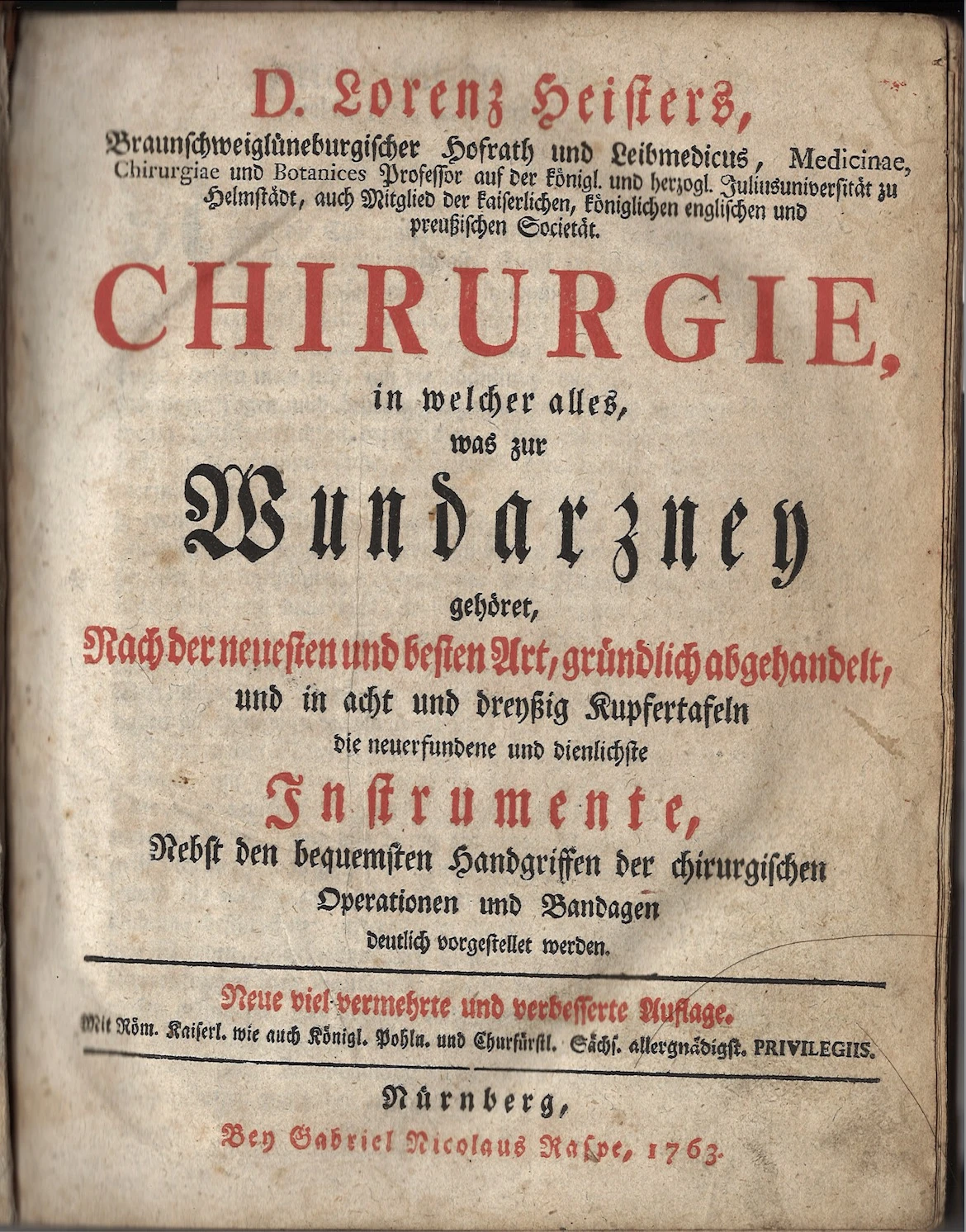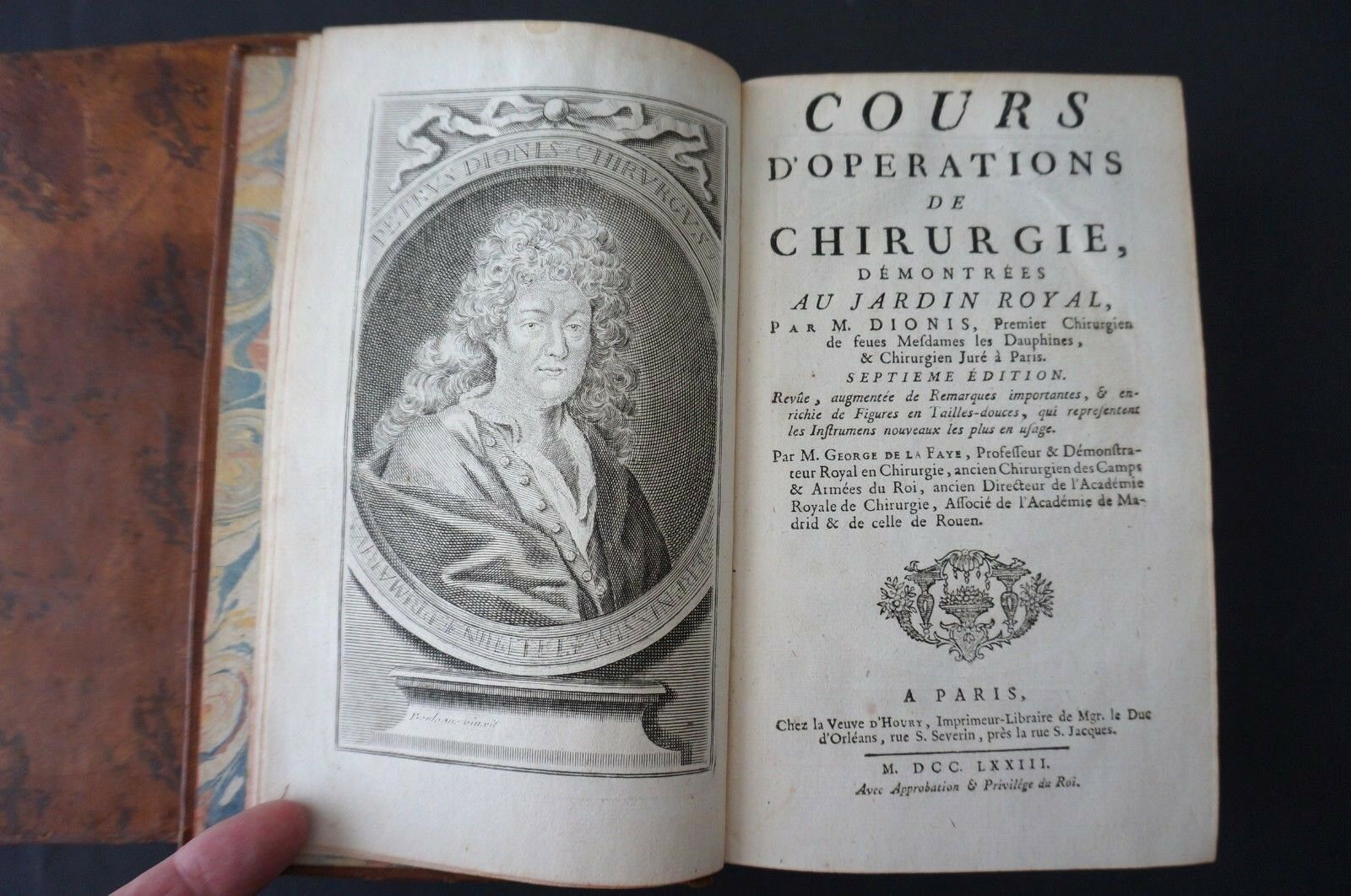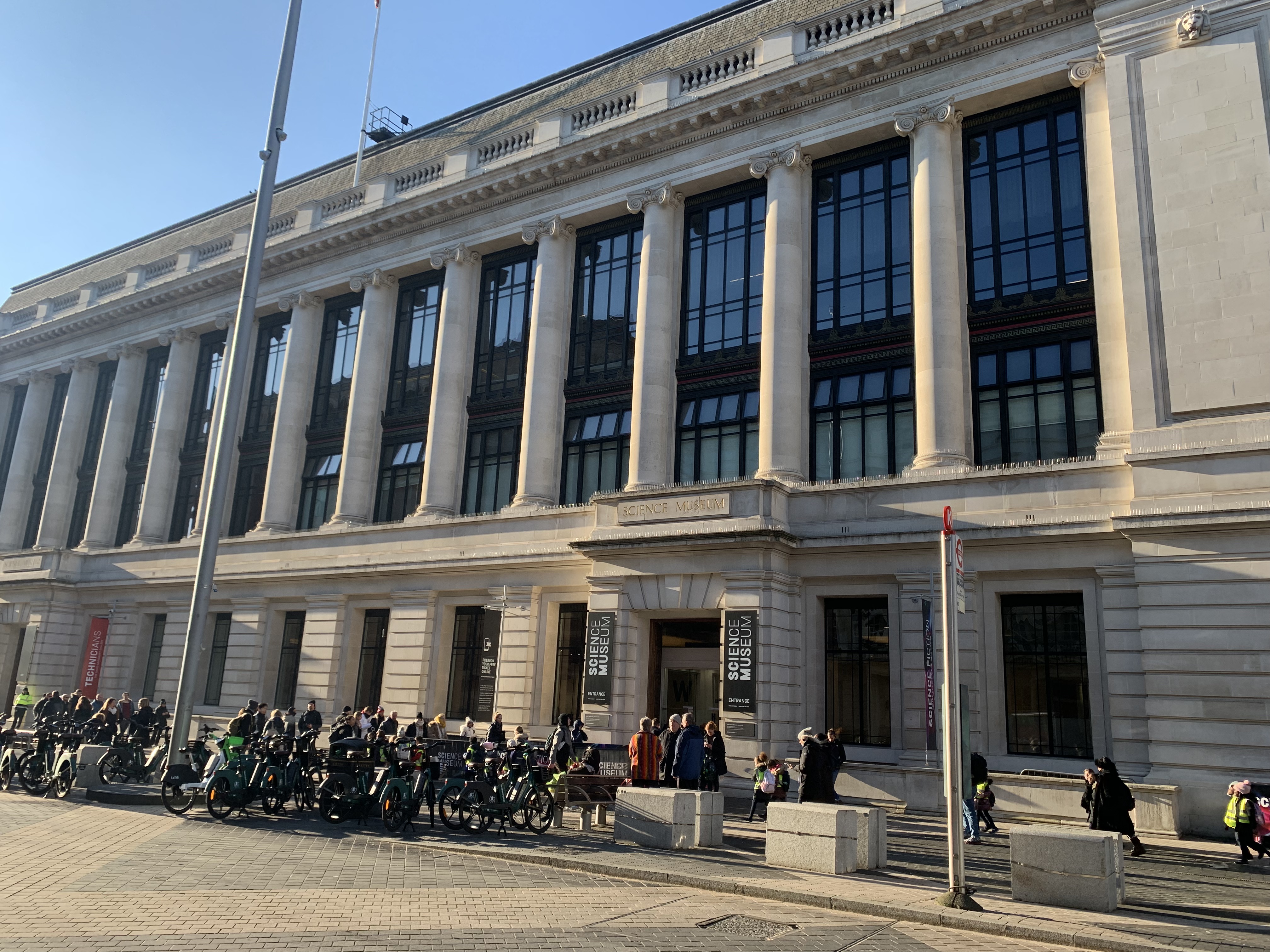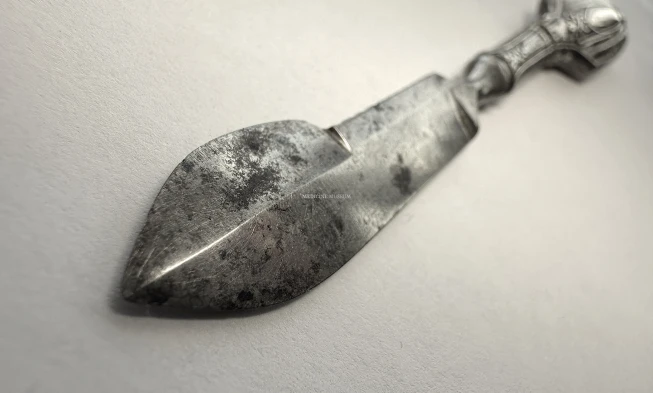Search results4 results
LIBRARY

Germany, 18 C.
Heister, Lorenz
Lorenz Heister (1683-1758). Chirurgie, in welcher alles, was zur Wundarzney gehöret, nach der neuesten und besten Art, gründlich abgehandelt... ("Surgery, in which everything that belongs to the surgical procedure is thoroughly dealt with in the latest and best way..."). 16+1078+24 pages, 38 engravings. Publisher: Gabriel Nicolaus Raspe, Nuremberg, 1763.

France, 18 C.
La Faye, Georg de
Cours d'opérations de chirurgie démontrées au Jardin Royal par M Dionis, Premier chirurgien de feues Mesdames les Dauphines et chirurgien Juré à Paris, en dix démonstrations (Course of surgical operations demonstrated at the Royal Garden by M Dionis, First surgeon to the late Mesdames les Dauphines and Sworn surgeon in Paris, in ten demonstrations). Published by the widow of Houry, printer and bookseller to Mgr le Duc d'Orléans, rue St Séverin, near rue St Jacques. Paris, 1773. Two volumes. A classic work on surgery, reprinted several times throughout the 18th century. Dionis' lessons cover the whole of operative medicine in ten demonstrations, from the lower abdomen to the head and eyes. Additional remarks by La Faye present discoveries made since the first edition, published in 1707.
MUSEUM

England, London
The Science Museum in London hosts one of the world’s largest medical collections, born from Sir Henry Wellcome’s vision to preserve the history of healing through objects. The modern Wellcome Galleries display over 3,000 items—from Fleming’s penicillin mould and the first MRI scanner to early prosthetics and surgical robots. Blending science, history, and ethics, the galleries engage millions of visitors yearly, while the digital catalogue and ongoing acquisitions ensure global educational and research impact.
Articles

Everyone who deals with antiques sooner or later encounters fakes, collectors of surgical instruments and medical historians are no exception. One of the most frequently counterfeited, or rather issued with fake description – is the lancet, perhaps the most commonly used instrument of the surgeon up to the beginning of the 20th century. The classic antique surgical lancet was an instrument used for opening abscesses, phlebotomy (bloodletting) and other procedures requiring a precise and minimal incision. In appearance, it resembled a small, thin, pointed, double-edged knife that allowed the doctor to make clean and precise incisions. The presented specimen appeared to be not a "silver Victorian lancet", but something else...